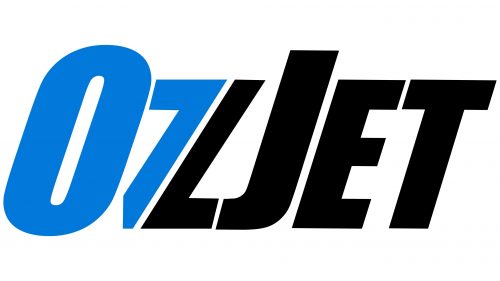The OzJet logo resembles a direct flight path along the coast. Movement at the junction of water and land, working on the edge of sky and earth, is evident in the emblem. The symbol showcases the speed of flights and the variety of the carrier’s offerings.
OzJet: Brand overview
OzJet, a budget airline based in Melbourne, Australia, existed from 2005 to 2012. Established in 2005 by Strategic Group, OzJet sought to establish itself in Australia’s domestic low-cost airline market, positioning itself against established competitors such as Jetstar and Virgin Blue.
OzJet began operations in March 2006 with a fleet of four Boeing 737-200 aircraft. The airline initially served routes between Melbourne and Sydney, with plans to expand to other major Australian cities, including Brisbane, Perth, and Adelaide, over the next two years.
Despite its ambitions, OzJet has found it difficult to gain significant market share in Australia’s competitive low-cost airline sector. By 2009, to stay afloat, the airline shifted its focus to operating charter flights for businesses and sports teams.
However, after suffering financial losses and failing to reach profitability for several years, OzJet ceased operations in 2012. The airline failed to build a reputation as a notable low-cost brand in Australia, especially against larger and better-resourced competitors.
At its peak, OzJet had a fleet of six aircraft and served more than 440,000 passengers per year on domestic Australian routes. The airline’s short existence demonstrated the difficulties and challenges often faced by small start-up low-cost carriers.
Meaning and History
What is OzJet?
This former Australian budget airline, based in Sydney, offered affordable flights to key domestic destinations. The company operated a Boeing 737 narrow-body aircraft fleet configured for efficient and economical short and medium-route operations.
2005 – 2012
The designers turned the simple inscription “OZJET” into a creative word mark. To do this, they made all the glyphs capitalized, enlarging the letters “O” and “J.” The use of bold italic font conveyed the company’s dynamism in the airline industry. In addition, the logo creators intriguingly divided the second letter diagonally so that one half resembles the number “7” and the other half resembles a stylized letter “L.” The blue letter “O” and the left side of the letter “J” stand out against the rest of the emblem elements painted in black.
The enlarged letters “O” and “J” attract attention, making the logo memorable and distinctive. The decision to use a bold italic font creates a sense of movement and speed, which fits well with the airline industry. The clever separation of the second letter adds complexity to the logo, encouraging the viewer to take another look. The color contrast between the blue and black elements creates a visually appealing aspect, emphasizing the key letters of the word mark.





